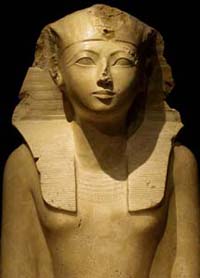Queen Hatshepsut
The accomplishments of Queen Hatshepsut are many, but perhaps the greatest of all was her ability to rule Egypt during the 18th Dynasty. Until this time it had been extremely rare for a woman to sit on the throne of Egypt and unheard of for a woman to boldly assume the role of pharaoh.
Considered by some scholars to be history's first woman of importance, Hatshepsut ascended to the status of pharaoh in the very male-dominated ancient Egypt, and her ascension was even more remarkable as she declared herself ruler through a bold power-play.
Her reign, circa 1473-1458 BC, was during a particularly fruitful portion of Egypt's 18th Dynasty. During her time in power, Egypt had the world's largest army, and the ruling families enjoyed a lifestyle on a lavish scale.
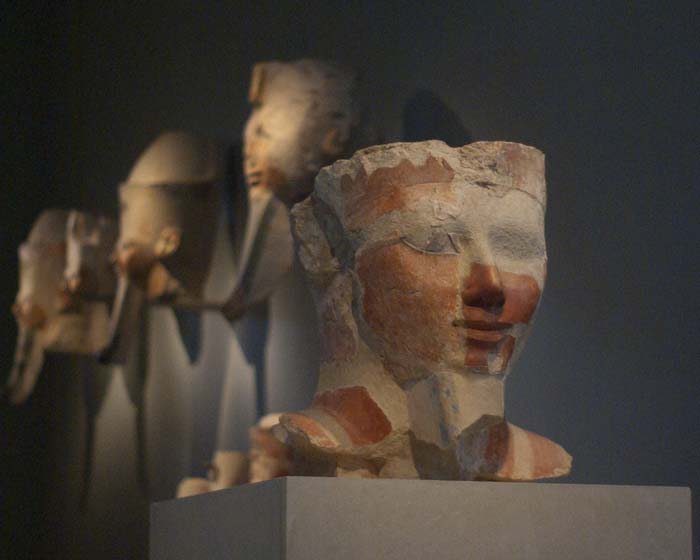
© Charles Hoffman - Head of Hatshepsut, Osiris Statue
Family Intrigue and Ascension to the Throne
A timeline of Queen Hatshepsut's life indicates she was born the daughter of King Thutmose I and one of his queens. When the king died, the throne was inherited by his son, Thutmose II. In keeping with traditional Egyptian standards, the new king married his father's oldest daughter. This meant that he married his half sister, Hatshepsut, and they had a female child called Neferure.
Thutmose II died at a relatively early age, and upon his death his son by another wife, Thutmose III, became pharaoh. The child was too young at the time to rule the great nation of Egypt, so Hatshepsut took over on his behalf, as regent. Hatshepsut ruled as regent for six years. In 1473 B.C. Hatshepsut decided she had had enough of ruling on behalf of the child and declared herself pharaoh.

© rocor - Statue of Hatshepsut
This was a bold move for the female ruler. It was at this time that Hatshepsut began to take measures to ensure the people of Egypt saw her as the legitimate ruler of the Egyptian nation. According to Egyptian customs, the ruling pharaoh would to be considered divine.
Hatshepsut struck upon the brilliant plan of claiming her mother was visited by the deity Amon-Ra, who called upon her while she was pregnant with Hatshepsut. This would seem to indicate that the queen was divine because of the visit.
Hatshepsut was also astute enough to realize that her stronghold on the throne of Egypt was only as strong as priest's support of her. She therefore made efforts to curry favor with them and succeeded admirably.
Finally, Hatshepsut disposed of traditional female clothing and donned the garb of traditional male pharaohs. Reliefs and artwork depicting the female pharaoh indicate that she wore a fake beard similar to the ones worn by previous males sitting on the throne of Egypt.
The art portraying the queen also seems to indicate that among the accomplishments of Queen Hatshepsut was the respect of the Egyptian people.
When Thutmose III came of age, she appointed him the leader of her armies. He became a brilliant military leader, and was named the "Napoleon of Egypt" by a group of Egyptologists who studied his military dominance in many of his major battles.
Because of her success in leading Egypt, Hatshepsut enjoyed a long reign, in spite of the pressure exerted by Thutmose III to ascend to pharaoh. Once he did become pharaoh, he began a campaign of erasing images and references to Hatshepsut in an effort to cancel out a female link in the long chain of the male pharaohs of the day. It has been speculated that he had her assassinated when he became old enough to rule on his own.
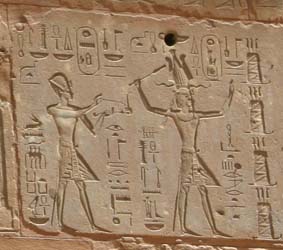
Thutmose II (left) and Hatshepsut (right)
An Accomplished Ruler
Through the successful establishment of trade routes, and numerous construction projects, Hatshepsut is now considered one of the most accomplished leaders of ancient Egypt.
Hatshepsut's Mortuary Temple
The majority of the information gathered about the queen's life came to light through hieroglyphics and artwork found on the walls of her temple at Deir-el-Bahri. The temple itself is a testament to the accomplishments of Queen Hatshepsut. Although construction of the shrine began during the reign of her father, it was the female pharaoh who actually finished it.
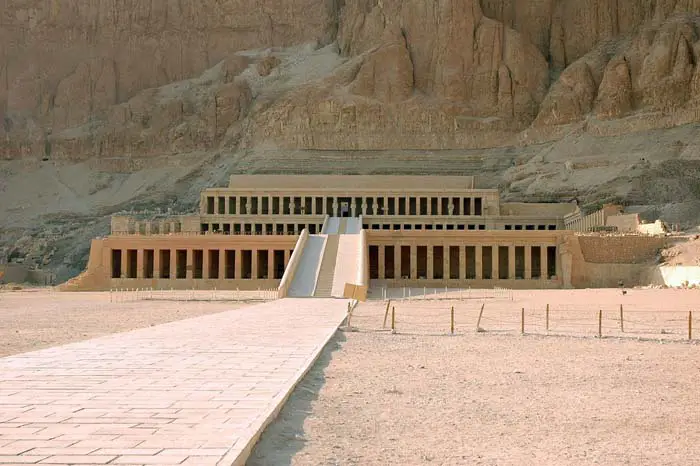
© Aleksey Gureev - Mortuary Temple of Hatshepsut, Deir-el-Bahri
In stark contrast to the pyramids, Hatshepsut's mortuary temple complex was built in a more secure area, to deter potential tomb raiders. Amazingly, the colonnaded structure of her tomb preceded the well-known Parthenon of ancient Greece.
Several pharaohs decided to place their temples near Hatshepsut's, with the intent of connecting themselves with the grandeur of her buildings.
Other Building Projects
Hatshepsut successfully commissioned many building projects in both Upper and Lower Egypt. Many of these buildings are thought to be grander and more complex than those built by her predecessors.
She also had two large obelisks constructed and placed at Karnak, one of the most significant temples of ancient Egypt where several monuments and statuary pieces were contributed by many pharaohs over a long period of time.
Her Chapelle Rouge, or Red Chapel, likely once stood between her two large obelisks at Karnak, depicted many of the events and accomplishments of her reign. The chapel was later destroyed as part of the effort to erase her from Egyptian history. Once it was rediscovered, the chapel was reconstructed, and stands once again at Karnak.
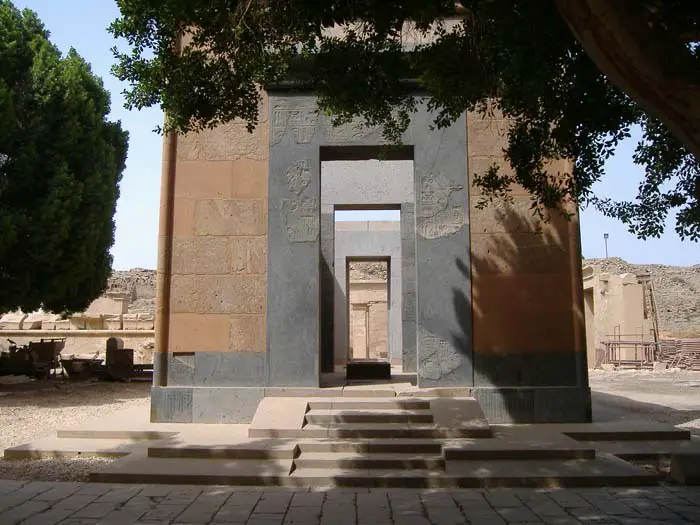
© Hannah Pethen - Hatshepsut's Red Chapel
Trading
Hatshepsut is credited for sending a trade mission to the Land of Punt to re-establish a commercial link that had been disrupted years earlier. Her delegation brought back many raw materials and plants from Punt, including several myrrh trees that are thought to be the first trees in history to be transplanted successfully.
Evidence also indicates that Queen Hatshepsut managed to bring back numerous precious and rare articles back to enhance the wealth of the Egyptian nation.
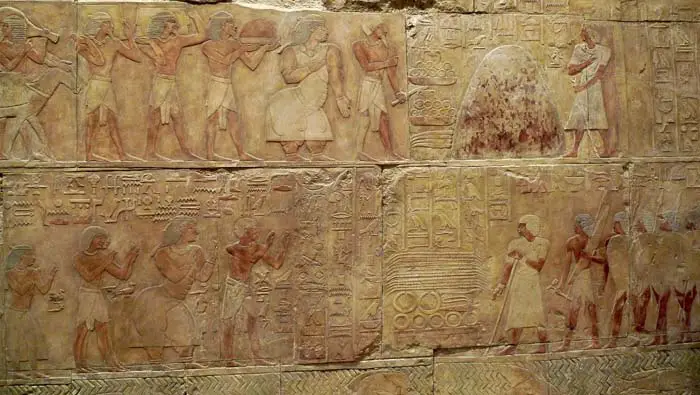
© tutincommon - Reliefs depicting Hatshepsut's expedition to Punt
Death Mystery
Incredibly, Hatshepsut's mummy was not positively identified until 2007. The body was identified in the Egyptian Museum (Cairo), by matching a tooth with an empty toot socket of the mummy's skull. Later, a DNA test showed a relationship between Hatshepsut's mummy and that of Amos Nefreteri, her grandmother.
After thoroughly researching her mummified remains, researchers determined she was in her fifties when she died. She was just over five feet tall and obese, and had several dental cavities. She also suffered from diabetes and bone cancer.
There is a theory that she contracted bone cancer through her usage of a lotion that contained a carcinogen. Though not completely accepted as the cause of death, researchers at the University of Bonn, in Germany, found the presence of the highly carcinogenic hydrocarbon benzopyrene.
Interesting Facts about Hatshepsut
- Her name translates to "Foremost of Noble Women".
- Though credited with some important military victories early in her reign, she is most remembered for returning a high level of economic prosperity to Egypt.
- Once she established herself as pharaoh, Hatshepsut took on many male attributes. She dressed herself in the traditional kilt of male rulers, and wore a fake beard to fit in with the male-dominated leaders she interacted with.
- Her successor, Thutmose III, is considered by some to be the most important of all pharaohs because of his military prowess.
- Because of the many pieces of statuary associated with her, there is a significant amount of floor space at the Metropolitan Museum of Art in New York dedicated to Hatshepsut.
- Compared with other female rulers of ancient Egypt, Hatshepsut's reign was longer and thought to be more significant due to her reestablishment of vital trade routes, and the long period of peace under her rule.

